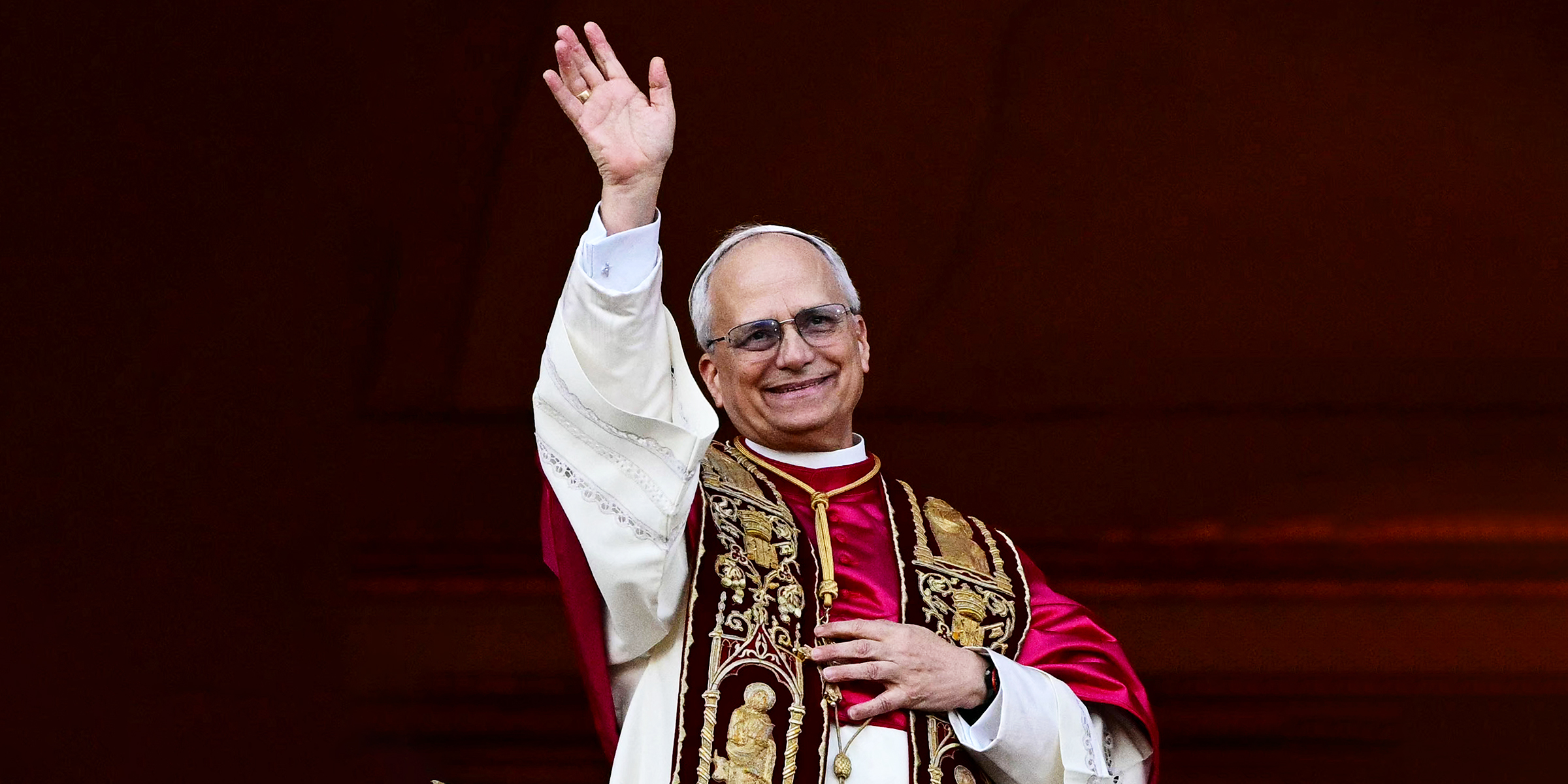
Controversy Surrounds Leo XIV Before Conclave 2025 — Here's His Full Story
Just before taking on the role of pontiff, Pope Leo XIV found himself under scrutiny due to earlier actions within the Catholic Church. Still, some insist he is merely a victim of a smear campaign.
Pope Leo XIV, he became the first American to lead the Roman Catholic Church — guiding a global community of 1.4 billion followers. Yet despite this groundbreaking moment, his rise to the papacy has drawn attention to past claims.
Even as the world welcomed the new leader, questions from the past began to resurface. Before his official appointment, Pope Leo XIV drew scrutiny after reports linked him to a number of priests later brought to court following serious accusations from women.
Observers noted that he had kept close ties with several of them at the time, and when legal proceedings began, a few of those same clergy members turned on him in their testimonies.
The fallout came quickly. Doubts surfaced over whether he had ignored warning signs or failed to act when it mattered most. Among those who openly criticized him was Lopez de Casas, who voiced his disapproval without hesitation:
"If he saw and stayed silent — he's not a good priest. That's complicity."
As public debate unfolded, more attention was given to Pope Leo's long journey within the Church. Appointed by Pope Francis in 2023 to oversee the Vatican office that appoints and manages bishops worldwide, he has spent the majority of his religious life abroad.
In Peru, he served in various roles — as a missionary, parish priest, teacher, and bishop. While leading the Augustinian order, the pontiff traveled extensively to visit religious communities and is fluent in both Spanish and Italian.
Raúl E. Zegarra, assistant professor of Catholic theological studies at Harvard Divinity School, noted that Pope Leo understands the Church's center "is not in the United States or the North Atlantic."
Following the account of his international service and multilingual fluency, Pope Leo formally assumed his new role with a message aimed at unity and hope. On May 8, 2025, the 69-year-old appeared on the balcony of St. Peter's Basilica as the 267th pontiff, addressing the faithful gathered below with the words, "Peace be with you all."
As he spoke to the crowd in St. Peter's Square, he acknowledged the late Pope Francis, urging Catholics to honor his efforts to bring people together. The Chicago native then outlined his own direction for the Church:
"We have to seek together to be a missionary church. A church that builds bridges and dialogue."
In his address delivered in Italian, Pope Leo emphasized the need for compassion and meaningful connection, urging the faithful to show charity and engage in dialogue rooted in love.
His message of kindness and connection was soon followed by a closer look at how quickly he rose to the papacy. Just two days after 133 cardinals entered the conclave, Pope Leo emerged as their choice — an outcome that pointed to strong backing early in the voting.
The speed of his election mirrored that of recent popes: both Francis and Benedict XVI were selected on the second day, while John Paul II took a third day in 1978. It followed a pattern seen with his recent predecessors — but tradition quickly took center stage as the formal rituals unfolded.
One of the first duties after accepting the role of Supreme Pontiff is choosing a new name, a custom rooted in early Church history. The Cardinal Protodeacon then presents the decision to the public with the declaration "Habemus Papam," followed by the pope's Latin baptismal name.
This long-standing practice — first inspired by Saint Peter, born Simon — symbolizes a spiritual rebirth. While early name changes often distanced new popes from pagan identities, the choice has since become a symbolic gesture.
Of the 267 popes in history, only 129 have taken a different name, with the tradition becoming firmly established by 955. Although a few, like Adrian VI and Marcellus II, kept their birth names, most followed the custom — sometimes even selecting a third name used within religious orders.
With his appointment now official, celebrations are unfolding across the Catholic world. His name is being spoken in churches and during services from Rome to rural towns. In the United States, where roughly one in five adults belongs to the faith, the moment has stirred widespread pride and joyful scenes.
The excitement reached beyond Vatican walls and touched hearts across the ocean, especially within Pope Leo's own family. In the US, the announcement sparked emotional reactions — none more heartfelt than those from his two older brothers.
John Prevost recalled speaking to his brother the day before the conclave began. He had told him he believed he could become the first American pope.
At the time, Pope Leo brushed it off as "nonsense" and "just talk," insisting, "They're not going to pick an American pope." John said, "He just didn't believe it, or didn't want to believe it."
Meanwhile, their eldest brother Louis Prevost was resting at home in Florida when his wife alerted him to the white smoke above the Sistine Chapel. As he watched the announcement, the moment the name "Roberto" was heard, he immediately recognized it.
"That's Rob," he said. "I was just thankful I was still in bed lying down, because I might have fallen down." What followed, he said, was spontaneous joy:
"I got out of bed and started dancing around like an idiot."
For Louis, the moment wasn't entirely surprising. He shared memories of Pope Leo as a young boy, already drawn to the priesthood. While his brothers played childhood games, he would pretend to give Communion using Necco wafers. He divulged:
"We used to tease him all the time — you're going to be the pope one day. Neighbors said the same thing. Sixty-some years later, here we are."
The Prevost family's pride stands on decades of quiet dedication, shaped long before cameras and headlines. That story begins in Chicago, where Pope Leo was born on September 14, 1955, to Louis Marius Prevost and Mildred Martínez.
He began his religious education with the Augustinian Fathers and went on to study mathematics and philosophy at Villanova University. In 1977, he entered the Augustinian novitiate, made his first vows a year later, and took his solemn vows in 1981.
His journey to priesthood continued at the Catholic Theological Union in Chicago and later in Rome, where the then-27-year-old was ordained in 1982 at the Augustinian College of Saint Monica. He later completed his doctorate in canon law, focusing on the role of the local prior within the Augustinian order.
By the mid-1980s, Pope Leo was sent to Peru, where he spent over a decade working in areas with limited resources. He served in leadership and teaching roles, guided parish communities, and helped form future priests.
In 1999, he was elected Provincial Prior of the Augustinian Province in Chicago, and by 2001, he became Prior General of the order, continuing for a second term in 2007.
His return to Chicago in 2013 marked a brief pause before Pope Francis appointed him Apostolic Administrator of the Diocese of Chiclayo in 2014. A month later, he was ordained bishop. His motto, "In Illo uno unum" — drawn from the teachings of Saint Augustine — speaks to unity through Christ.
From 2015 to 2023, he led the Diocese of Chiclayo. During this period, Pope also held several national and Vatican-level responsibilities, including roles with the Congregation for the Clergy and the Congregation for Bishops.
In 2020, he was also appointed Apostolic Administrator of Callao, continuing his service in Peru until being called to the highest office in the Church. As his leadership path became clearer, the Vatican's Congregation for the Doctrine of the Faith opened an internal investigation in response to misconduct claims involving him in the Church.
The inquiry aimed to determine whether Pope Leo had any involvement. After several months of thorough review, officials concluded that the accusations were baseless and found no proof of misconduct.
Supporters believe the claims were driven by a smear campaign linked to a Peruvian-based Catholic group that had been dissolved during Pope Francis's tenure.
Pope Leo's election marks a historic moment as the first American to lead the Roman Catholic Church. His decades of service, especially in Peru and within the Augustinian order, shaped his reputation as a thoughtful and experienced leader.
While early controversy tested the start of his papacy, a Vatican investigation cleared him of any wrongdoing. As he begins his tenure, the global Church watches closely to see how he will guide its future.
